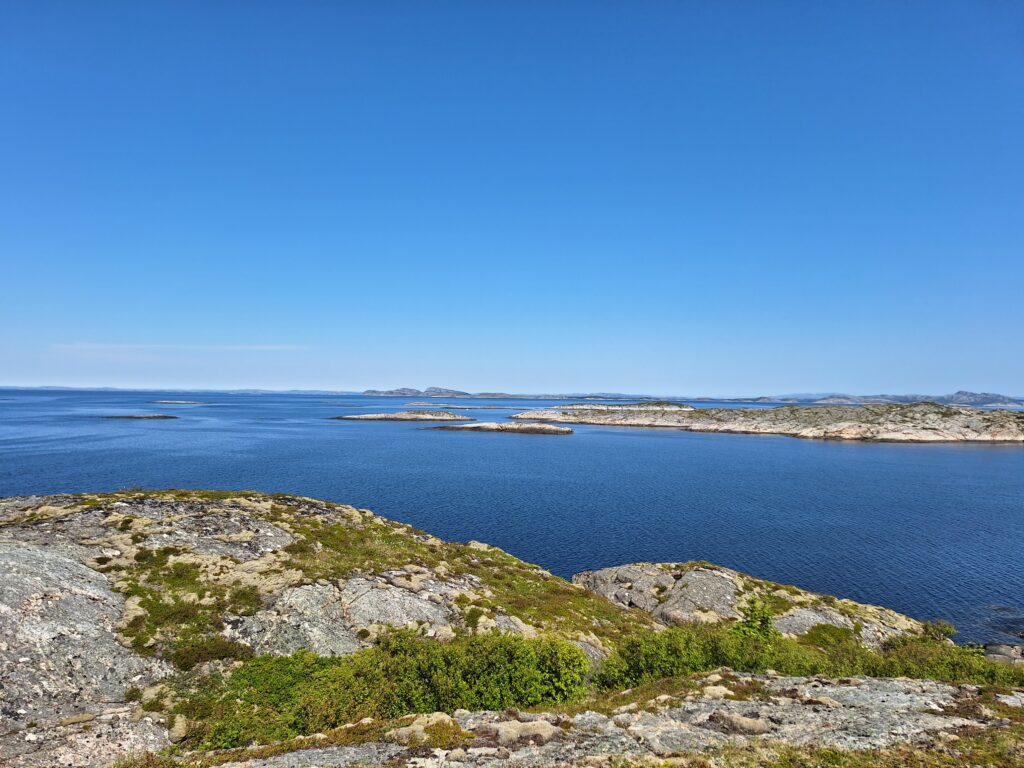In the Middle Ages there were only three churches in Namdalen: Nærøy, Overhalla and Fosnes at northern Jøa. Fosnes parish included, among others; Namsos, Flatanger, Otterøya and Gjæslingan.

Early Christianity was good at cultural assimilation. The first churches were often placed on existing worshipping sites (hov), but this did not happen on Jøa. Peculiar! Placement of the church site was a very important decision, and around Jøa they had a dispute about this. A legend tells that in order to reach an agreement, fate (God) was allowed to prevail in the following way: The timber foundations of the church were pushed into the sea from Kirkenesset at Salsnes. The church was then to be erected where the logs drifted ashore. And the logs, they drifted ashore in Fosnesvågen on Jøa. But then no one rescued them before they went out to sea again. Now they ended up at Seierstad (today’s ferry quai) at Jøa. But again they drifted out to sea before being salvaged, and time passed. When the logs ran ashore for the third time, it was once again in Fosnesvågen. The logs were picked up and the church built at Fosnes (this is quite reminiscent of how the conquerers in Iceland let the Norse Gods decide the location of the farm by throwing the high seat logs into the sea and notifying where they drifted ashore).

We went from Fosnes to Hov on the east side of Jøa (where the church should have been placed), but there were not much visible left of the old times. Further towards the sea, however, is Rakkavika, and that’s a nice place to have a bath.

We wondered a little about the name, whether a ‘rakker’ had lived there (the rakker used to be the executioner in Norwegian towns, and also the one who emptied toilets and latrines). However, this far out to sea and in areas so desolate, it is unlikely that anyone at Jøa was employed to empty the toilets or run as executioner. It may seem that the word comes from rakke = a ring where the sail is attached to the mast (the ring protrudes from the sail), and in nature something that sticks out is called a headland. Tobatheornottobathe therefore concludes that the name ‘Rakkavika’ means Oddevik (Headland Bay), a really charming contradiction. Comments are welcome!

From Rakkavika, there are beautiful hiking trails in several directions. Because of that, we actually did not bathe there, as we wanted to see where the paths brought us. A well-arranged trail leads out towards the sea, to Hovsodden. Benches and tables, a barbecue and a view map are placed there. A fantastic place with a wonderful view!

From the barbecue area, an easier, marked path goes all the way to Jøa’s westernmost point. For small children’s feet, this is a really nice ‘mountain tour’, with the possibility of climbing the ‘Rakkabolt’, Jøa’s ‘Kjeragbolt’.

Once at the sea, you will find the finest white beach you could wish for. At least if you have small children with you.

Tobatheornottobathe prefer to bathe from rocks in stead of sand, so we went even further out, to Oksholmen (The Oxen Islet). And yes, it was a really wonderful bath.

The coastal rocks were black of algae, and warm! It was really nice to dry off in the sun. For sure it is just right to swim in Rakkavika, but perhaps even better to have a bath at Hovsodden.
